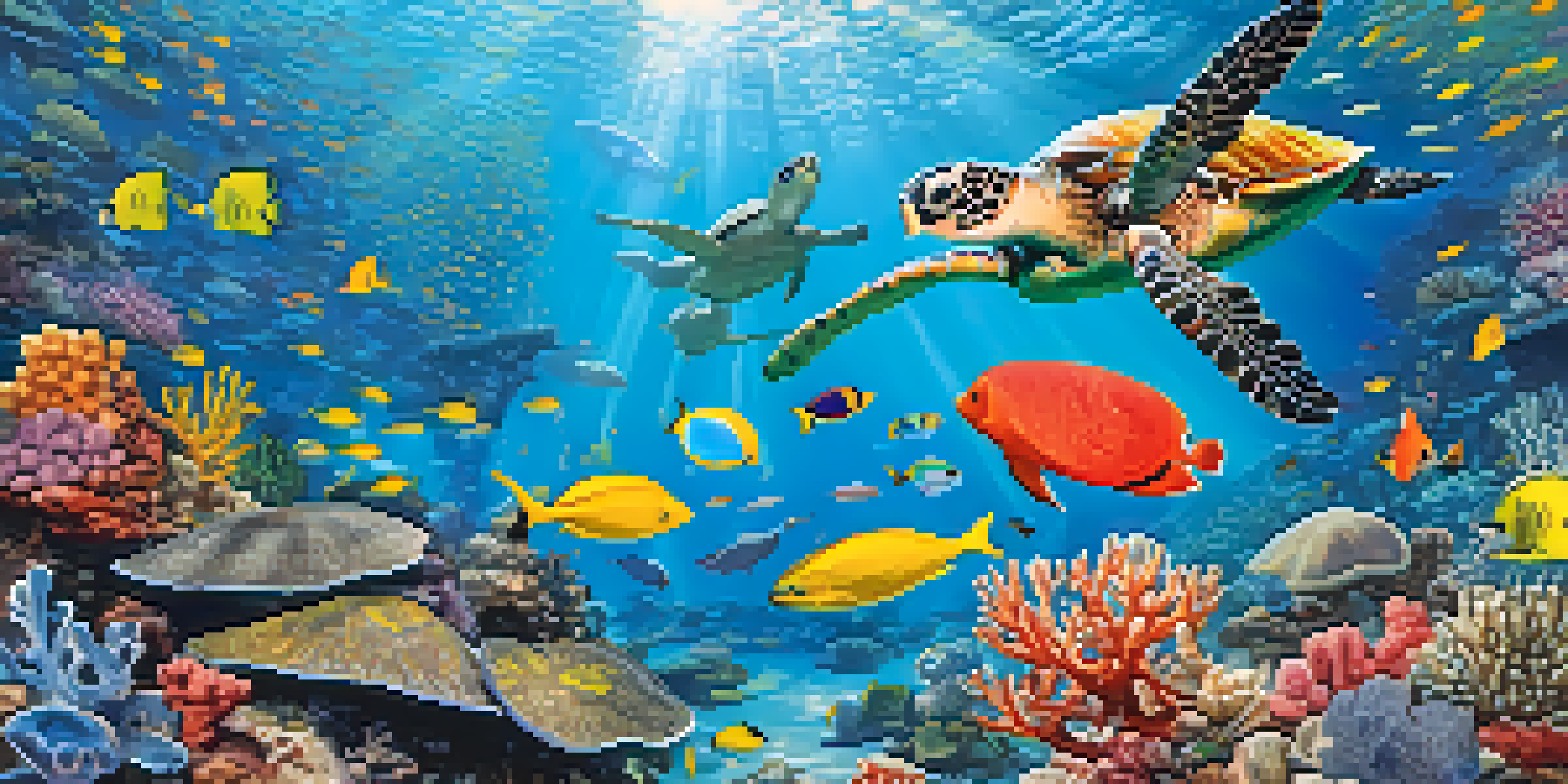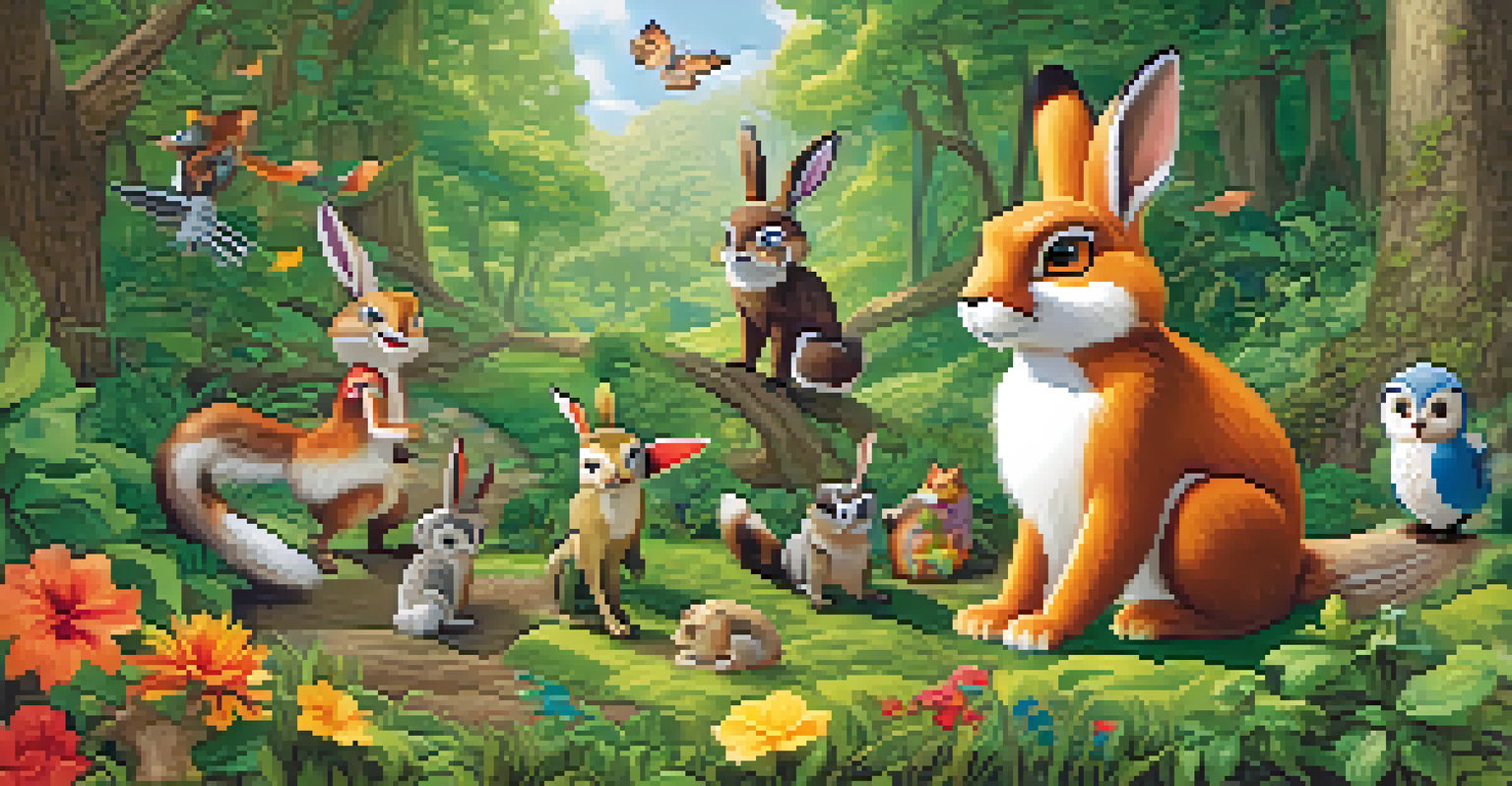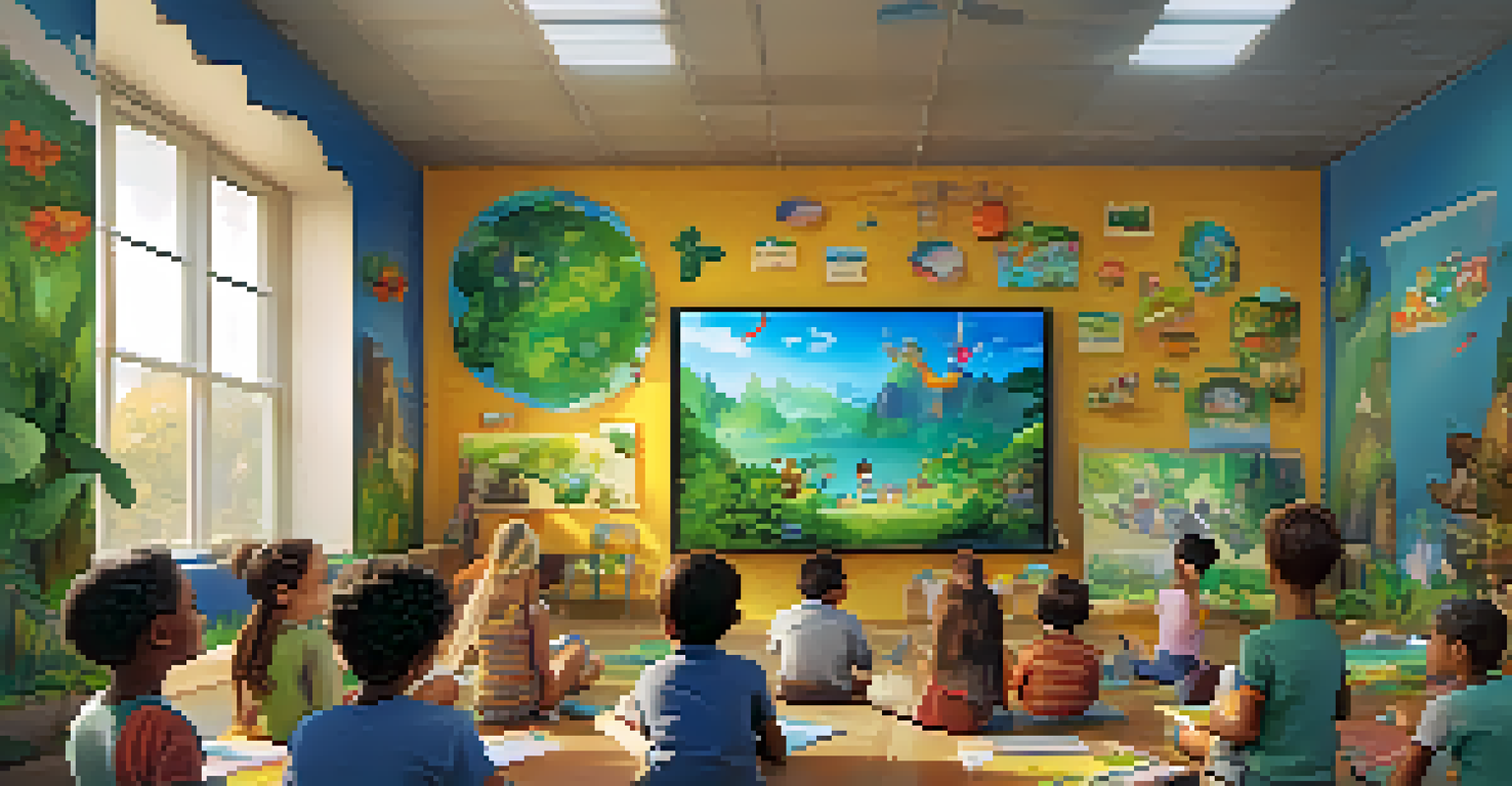Children's Films and Early Environmental Education Strategies

The Power of Storytelling in Children's Films
Children's films have a unique ability to capture young imaginations through storytelling. These narratives often revolve around characters embarking on adventures that resonate with real-world issues, including environmental concerns. By presenting these themes in a relatable manner, filmmakers can instill a sense of responsibility and curiosity about nature in children.
The greatest gift you can give your children is the roots of responsibility and the wings of independence.
For example, animated features like 'Finding Nemo' not only entertain but also subtly educate viewers about marine ecosystems and the importance of conservation. Such films create memorable experiences that can inspire children to explore and appreciate the natural world. This emotional connection fosters a deeper understanding of environmental issues beyond mere facts and figures.
When children engage with these stories, they often internalize the messages conveyed through the characters' journeys. This emotional engagement can lead to a lasting interest in environmental stewardship, making storytelling a powerful tool in early education. By merging entertainment with education, children's films lay the groundwork for future environmental advocates.
Key Themes in Environmental Education through Film
Many successful children's films tackle specific environmental themes, such as pollution, climate change, and biodiversity. For instance, 'Wall-E' presents a cautionary tale about the consequences of neglecting our planet, encouraging young viewers to think critically about their own environmental impact. Such themes resonate with children, making complex issues more digestible and relatable.

These films often feature characters who face the repercussions of environmental neglect, helping children understand the cause-and-effect relationship in real-world scenarios. By illustrating the impact of human actions on the planet, filmmakers can inspire children to adopt eco-friendly habits. This narrative approach not only entertains but also educates, making the learning process enjoyable.
Storytelling Inspires Environmental Care
Children's films engage young audiences through relatable narratives that foster a sense of responsibility towards environmental issues.
Moreover, these themes can spark discussions between children and caregivers, further amplifying their educational impact. As families watch these films together, they often engage in conversations about environmental issues, which reinforces the lessons learned. In this way, children's films serve as catalysts for broader discussions about sustainability and care for the Earth.
Incorporating Environmental Education in School Curricula
Teachers and educators increasingly recognize the value of using children's films as educational tools in the classroom. Integrating films that focus on environmental themes can enhance traditional teaching methods by providing a visual and emotional context for lessons. This approach helps students grasp complex concepts more easily and retain information longer.
Children are the world's most valuable resource and its best hope for the future.
For example, after watching a film like 'The Lorax', teachers can initiate discussions about deforestation and its effects on wildlife. Students can then participate in projects that promote sustainability, such as planting trees or creating recycling programs. This hands-on involvement reinforces the messages from the film and empowers children to take action in their own communities.
By aligning film content with educational goals, educators can create a dynamic learning environment that fosters critical thinking and environmental awareness. This synergy between film and education not only enriches students' knowledge but also encourages them to become proactive stewards of the planet. The combination of entertainment and education is a powerful strategy for instilling environmental values in young minds.
The Role of Animation in Engaging Young Audiences
Animation plays a pivotal role in capturing the attention of young audiences, making complex environmental issues more accessible. Bright colors, whimsical characters, and fantastical settings can transform serious topics into engaging stories that spark curiosity. This visual appeal is crucial in fostering an early interest in environmental education.
Films like 'Zootopia' cleverly incorporate themes of tolerance and coexistence while highlighting issues like habitat preservation. Through clever animation, children can relate to anthropomorphic characters, allowing them to empathize with various species and their struggles. This connection can motivate them to advocate for wildlife conservation and biodiversity.
Animation Makes Learning Fun
The use of vibrant animation in children's films simplifies complex environmental themes, making them more accessible and engaging for kids.
By leveraging the power of animation, filmmakers can create memorable experiences that resonate with children's emotions. This emotional connection not only enhances their understanding of environmental issues but also encourages them to take an active role in protecting the planet. Engaging storytelling through animation is an effective strategy for fostering a love for nature in young viewers.
Encouraging Critical Thinking through Film Discussion
After viewing children's films with environmental themes, discussions can encourage critical thinking and reflection among young audiences. Educators and parents can ask open-ended questions that challenge children to consider the implications of the film's message. This dialogue fosters a deeper understanding of environmental issues while developing analytical skills.
For instance, asking questions like 'What would happen if we don't take care of our planet?' prompts children to think critically about their actions and their consequences. These conversations create a safe space for children to express their thoughts and feelings about the environment, allowing them to form their own opinions. Engaging in discussions also reinforces the lessons learned in the film, making them more impactful.
Additionally, these discussions can empower children to share their newfound knowledge with peers, promoting a broader awareness of environmental issues. By encouraging dialogue around the themes presented in films, children learn to articulate their thoughts and advocate for positive change. This approach not only enhances their learning experience but also nurtures responsible future citizens.
Promoting Sustainable Practices through Film Actions
Children's films can inspire young audiences to adopt sustainable practices in their daily lives. By showcasing characters who engage in eco-friendly behaviors, these films can serve as powerful examples for children to emulate. When children see their favorite characters recycling, conserving water, or planting trees, they are more likely to mirror those actions.
For example, films like 'Moana' emphasize the importance of respecting nature and working in harmony with the environment. This portrayal encourages children to consider their relationship with nature and the impact of their choices. Such positive representations can motivate children to take small but meaningful steps towards sustainability in their own lives.
Discussions Enhance Critical Thinking
Post-film discussions about environmental themes encourage children to think critically and articulate their thoughts on sustainability.
Moreover, these actions can extend beyond the screen, as children may want to participate in community initiatives that align with the film's messages. Whether it’s organizing a clean-up day or starting a garden, children become more engaged in their communities. This empowerment through action reinforces the teachings of the films and nurtures a lifelong commitment to environmental stewardship.
The Future of Children's Films in Environmental Education
As the global conversation around climate change and environmental issues continues to grow, the role of children's films in education will become increasingly vital. Filmmakers have a unique opportunity to address pressing issues while entertaining young audiences. The integration of environmental themes in children's media can help shape a generation that values sustainability.
By creating films that challenge the status quo and encourage eco-conscious living, filmmakers can inspire children to become advocates for the planet. The evolution of technology and storytelling techniques means that future films can delve deeper into complex issues while remaining engaging for young viewers. This fusion of entertainment and education is essential for fostering an environmentally literate society.

Ultimately, the future of children's films lies in their ability to spark curiosity, inspire action, and cultivate a sense of responsibility toward the environment. As audiences continue to demand content that reflects their values, filmmakers must rise to the occasion. By prioritizing environmental education in children's films, we can ensure that future generations are equipped to protect and cherish our planet.